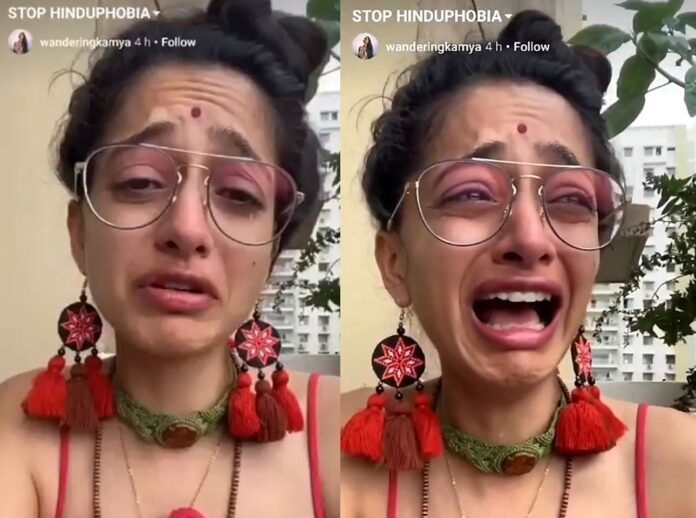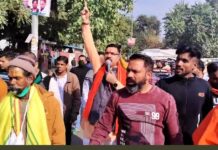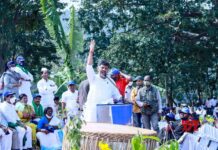Illustrator and poet Priyanka Paul became a target for a casteist and misogynist hate campaign by right-wing trolls after she posted an Instagram story parodying a recent viral video of an Indian-origin British spirituality influencer who goes by the username ‘wanderingkamya’. It is important to examine the context in which Priyanka was faced by this barrage of violent insults, and what it says about the Indian diaspora, caste, and right-wing narratives.
Where it all started: Celebration of Ram Mandir
Kamya made a celebratory post on August 5, the day of the ‘bhoomi pujan’ for the Ram Mandir in Ayodhya. According to the SC verdict, this temple will be built in spite of the unlawful demolition of the Babri Masjid by Hindu mobs accompanied by widespread violence. In her post, She referred to the ‘reconstruction’ of the Ram Mandir as a victory for ‘Indigenous heritage’, likening ‘Indian culture’ to Hinduism, and Hindu philosophy as the original ‘identity of the land’. Well versed with RSS narratives, she wrote,
“And the history of our land is just as beautiful as it is tragic. Millions of Hindus killed by invaders. Thousands of temples demolished. Mostly through Islamic conquest but also British conquest.”
While the post was liked by more than 23,000 people on Instagram, Kamya claimed that she received a lot of ‘hateful’ comments and messages. In response to this, she posted a video of herself crying out of distress caused by ‘Hinduphobia’, and it was this video that went viral.
Crying Hinduphobia and Appropriating Language of Social Justice
In the video, Kamya equates Hindus with Native Americans in the US, and questions why people are ready to support the latter but have only ‘hatred’ against the establishment of the Ram Mandir. She doesn’t mention the fact that the internationally recognized indigenous people of India are not Hindus, but rather, Adivasis or tribal communities. The Supreme Court also affirmed the Adivasis to be the ‘original inhabitants’ of India in 2011, and scholars of Indian history have argued that Adivasis are the descendants of the Indus Valley Civilisation, which preceded the internal migration of Aryan groups. In fact, caste-Hindu society has historically oppressed this group, seeing them as ‘uncivilised’ and ‘primitive’. While Kamya said that the establishment of the Ram Mandir was a victory for ‘colonized’ people, it is Adivasi lands and natural resources that have been colonized by the Indian state and capital for ages, leading to large scale displacement and violence.
Savarna Diaspora and ‘Brown’ Oppression
She also cries out saying that while people are ready to ask for justice for Black people from racism, they have only hate for the ‘pandits and saints’ of India. This arises out of a common discourse, especially amongst the Indian diaspora, where Indians are seen as one of many communities who can be called ‘people of colour’, and aligns them with the oppressed in anti-racist discourses. This discourse arises out of an attempt to erase caste as a core tenet of Hinduism and reframe Savarna privilege as ‘brown’ oppression.
While Indians may be a minority in Western countries, most of the Indian diaspora comprises Brahmins and other Savarna Indians who are able to migrate due to this very privilege they have back at home. Through remittances and donations, these Indians are very much closely connected to the workings of political and social organizations back home, and have ample interest in preserving caste privileges. Be it the recent show ‘Never Have I Ever’ praised as groundbreaking minority representation propagating anti-Muslim ideas and glorifying Hindu rules of purity and pollution or NRI matrimonial ads– caste privilege is one of the most striking features of the majority of the Indian diaspora.
The struggle for Black liberation, against modern slavery in the prison system, the widespread incarceration and demonisation of black people, police brutality, violence from white people, discrimination in work, healthcare, and education, and so on, are antithetical to the Savarna diaspora’s interests, a group that has historically profited off of the violent exploitation and oppression of Bahujans in India. The entire narrative of ‘Hinduphobia’ and oppression of ‘Hindus’ by ‘white colonizers’ ignores this crucial inequality in Hinduism, where there are vast differences between the social, economic, and political status of different castes. Anti-caste intellectuals like Suraj Yengde have pointed out the organic possibilities for solidarity between Dalit and Black movements against caste and race.
Priyanka Paul’s Parody of Kamya

It was in order to point out these glaring hypocrisies in Kamya’s narrative, that Priyanka Paul made a satirical video, dressing up as Kamya, mimicking her accent, and making the point that Hindus are neither indigenous, nor oppressed, and that Kamya has ignored the years of oppression faced by the Bahujan and the historical presence of many other religions besides Hinduism in the country. She was one of many people who took to social media to poke fun at Kamya’s casteism and false victimhood through memes.
Abuse from Trolls and Propaganda Sites
In response, Priyanka received the vilest and violent casteist and misogynistic abusive messages on her social media, on comments, and over private messages. The messages used slurs and threats, shaming her for her caste, size, sexuality, religion, and gender, screenshots of a few of which she posted on her Instagram account.
Although her video was criticised for using explicit language, it is important to remember that no matter what her language may have been, the extent of abusive and derogatory messages she received were not proportionate or justified.
Meanwhile, an article posted on OpIndia proclaimed the very opposite- that Priyanka Paul was a Hinduphobic who should be arrested. The title proclaimed that Kamya received ‘rape and death threats for celebratory post on Ram Mandir Bhoomi Pujan’. However, when one goes through the screenshots attached to the article about the supposed abuse, there are no such threats, most of which critiqued her ideas on grounds of their casteist and fascist nature.
On a statement on her Instagram page, Priyanka Paul rightly pointed out that there is absolutely no comparison between the mocking of Kamya’s video online and the violent abuses that Paul received, which would not have been justified no matter what she had done or said. She pointed out that as a Dalit woman, she will never be able to claim victimhood from caste-society as Kamya did, and that she is not going to apologize to “the very insecure Brahmanical Patriarchy who can’t handle a young woman who dares to speak her mind”.




























